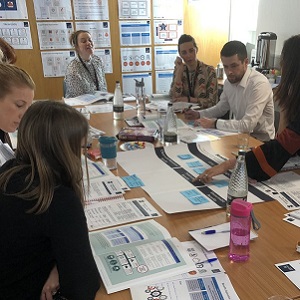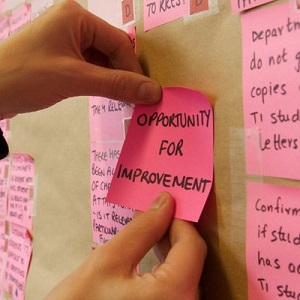Our central Continuous Improvement function was established in May 2013, so we are approaching our 6th anniversary. Over the last 6 years we have been involved a large number of change and improvement projects, which have had significant impact for the University. In reflecting on this, I thought it may be useful to share some of my reflections, thoughts and tips for those involved in implementing change and improvements in their organisations.
1. Ensure that ‘Respect for People’ is at the heart of what you do and how you do it
 All too often the focus is on cost savings, resource reduction, income generation and we lose sight of the people that are affected by change.
All too often the focus is on cost savings, resource reduction, income generation and we lose sight of the people that are affected by change.
Be clear on the purpose for the change, then empower and trust the people in the organisation to seek and implement improvements; help and encourage them to take ownership of the change. In taking this approach, change is far more likely to be embedded and sustained.
2. Develop an approach that fits the culture of your organisation
Many organisations seek external support to help establish their continuous improvement activities. We were no different. Using external expertise is a great way to get you started, however, it is important that you adapt, develop and evolve your own approach to suit the culture of your organisation. Simple things like terminology can turn people off from the start.
3. Keep it simple; if it’s too complicated, it’s extremely difficult to implement and embed the approach organisation-wide
Building continuous improvement capability and capacity across your organisation is critical if you are seeking to implement change and/or create a culture of continuous improvement. In my experience, to help achieve this, it’s important not to over complicate things. I’ve seen many examples of complicated process mapping techniques and complex terminology. If you're expecting people in your organisation to build it into their daily or weekly activities, keep it simple. Otherwise it will not stick.
4. Find a way to evidence the impact of the improvement activities to help build momentum
In my experience relying on “people said it feels better” will only get you so far. I agree that this is important but in my opinion and experience you need to be able (and will more than likely be expected) to demonstrate and evidence the impact of your change and improvement activities. Whether this is improving the student, staff and stakeholder experience, creating staff capacity through the removal of non-value added activity, increasing income or reducing costs, I think it’s important that we are able to evidence these improvements. But remember, as I mentioned in 1 above, never lose sight of “Respect for People”.
5. Learn from the things that don’t go well, understand why and use this as a platform for improvement
Accept that not everything you try will lead to an improvement. The important thing is that you had the courage to try something new. Ok it didn’t work this time, but focus on what can be learned from this and try something else.
6. Focus on the ‘critical few’ and do these really well
This approach can be applied to the potential improvements and also to the anticipated benefits of the improvements you are making. I have often found that the 80/20 rule can be applied; namely that 20% of the issues lead to 80% of the problems. Therefore, if you fix the 20% (the critical few), you will remove 80% of the problems.
Similarly, when it comes to anticipated benefits, don’t try to measure every single thing. Try to identify what you think are the critical few benefits and measure them very well. This will help you evidence the impact of your improvement activities that I mentioned in 4 above.
7. Celebrate and value each other’s achievements
Finally, make sure that you celebrate and value each other’s achievements. You have delivered a successful improvement or change project, you have been able to evidence the positive impact that this has had both for the people, stakeholders and wider organisation. Celebrate the fact that you have been able to do this. We use visual case studies to showcase the success of the people and teams that we work with; we have found that this helps to build the momentum for further improvement activity.


